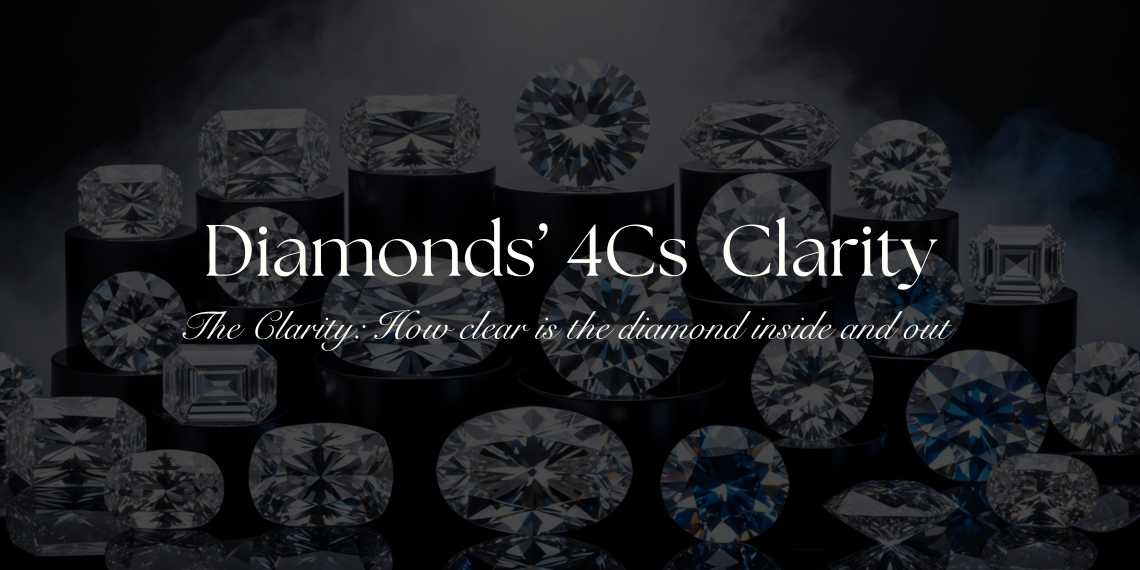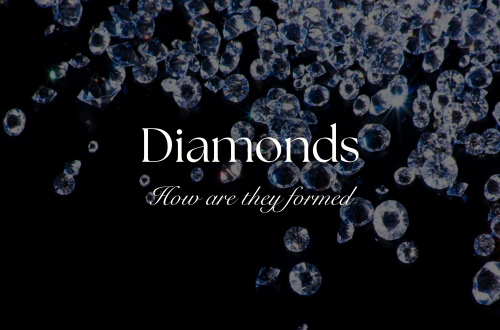The 4Cs of Diamonds: Understanding Clarity
Diamonds, known for their dazzling brilliance and enduring value, are graded according to the 4Cs: Cut, Color, Carat, and Clarity. Among these, Clarity is a crucial characteristic that significantly impacts a diamond’s beauty and value. In this blog post, we will explore the intricacies of diamond clarity, its grading system, and what you should consider when choosing a diamond based on its clarity.
Introduction to Diamond Clarity
Diamond clarity refers to the presence of internal characteristics, known as inclusions, and external characteristics, known as blemishes. These characteristics are natural and form during the diamond’s creation deep within the earth. While most diamonds have some degree of inclusions or blemishes, the fewer and less visible these imperfections, the higher the clarity grade and value of the diamond.
The GIA Clarity Scale
The Gemological Institute of America (GIA) developed the widely recognized clarity grading scale, which ranges from Flawless (FL) to Included (I3). Keep in mind that both HRD and IGI do not include FL (flawless) and start their scale at IF (internaly flawless) this is to lower the risk of a stark fall in value for diamonds that were deemed flawless if the get a scratch or a minor surface blemish. Here’s a breakdown of the GIA clarity scale:

- FL (Flawless): No inclusions or blemishes visible under 10x magnification. These diamonds are extremely rare and highly prized.
- IF (Internally Flawless): No inclusions visible under 10x magnification, but minor blemishes may be present on the surface.
- VVS1 and VVS2 (Very, Very Slightly Included): Inclusions are very difficult to see under 10x magnification, even for a skilled grader.
- VS1 and VS2 (Very Slightly Included): Inclusions are minor and range from difficult (VS1) to somewhat easy (VS2) to see under 10x magnification.
- SI1 and SI2 (Slightly Included): Inclusions are noticeable under 10x magnification and may be visible to the naked eye, especially in SI2 diamonds.
- I1, I2, and I3 (Included): Inclusions are obvious under 10x magnification and can often be seen with the naked eye. These inclusions may affect the diamond’s transparency and brilliance.
How Clarity Affects Value
Clarity significantly influences a diamond’s value. Flawless and Internally Flawless diamonds are incredibly rare, making them the most valuable. As the clarity grade decreases, so does the diamond’s value. However, it’s important to note that the impact of inclusions and blemishes on a diamond’s appearance can vary. Inclusions that are small, located on the periphery, or masked by the diamond’s facets may not significantly affect its beauty, allowing for good value in lower clarity grades.
Choosing the Right Clarity
When selecting a diamond, clarity is an essential consideration, but it should be balanced with the other three Cs (Cut, Color, and Carat) to ensure the best value for your money. Here are some tips for choosing the right clarity:
- Budget: Higher clarity grades command higher prices. Determine your budget first and consider what clarity grade provides the best balance of beauty and cost within that range.
- Eye-Clean Diamonds: Diamonds with inclusions that are not visible to the naked eye are often referred to as “eye-clean.” For many buyers, an eye-clean diamond in the VS2-SI1 range offers an excellent balance of clarity and value.
- Diamond Shape: Different diamond shapes show inclusions differently. For example, step-cut shapes like Emerald and Asscher cuts have larger, open facets that make inclusions more visible. In contrast, brilliant cuts like Round, Princess, and Cushion cuts can hide inclusions better due to their faceting pattern.
- Personal Preference: Some buyers prioritize having a diamond with the highest possible clarity, while others are comfortable with minor inclusions that do not affect the diamond’s overall appearance. Consider what is most important to you or the person you are buying the diamond for.
Impact of Inclusions and Blemishes
Inclusions and blemishes can affect a diamond’s appearance and durability. Common types of inclusions include:
- Crystals or Mineral Inclusions: Tiny crystals or minerals trapped within the diamond. These can vary in size, color, and visibility.

- Feathers: Small cracks within the diamond that can look like feathers. They may pose a risk to the diamond’s durability if they reach the surface.

- Clouds: Groups of tiny inclusions that give a hazy appearance to a part of the diamond.

Common types of blemishes include:
- Polish Lines: Fine lines on the diamond’s surface caused by the polishing process.

- Scratches: Fine lines on the diamond’s surface that can occur during handling.

- Nicks: Small chips on the diamond’s surface, often near the girdle (the outer edge of the diamond).

Clarity Enhancement Techniques
Some diamonds undergo treatments to improve their clarity. These treatments can include:
- Laser Drilling: A laser is used to remove dark inclusions. This process leaves tiny drill holes that are sometimes filled with a glass-like substance.

- Fracture Filling: Small cracks or fractures are filled with a clear substance to improve the diamond’s appearance.
While these treatments can enhance the appearance of a diamond, they can also affect its value and durability. It is essential to know if a diamond has undergone clarity enhancement treatments before making a purchase.
Conclusion
Understanding diamond clarity is crucial for making an informed purchase. While higher clarity grades are rarer and more valuable, many diamonds with lower clarity grades can still be beautiful and offer excellent value, especially if their inclusions are not visible to the naked eye. When shopping for a diamond, consider how clarity interacts with the other 4Cs to ensure you select a stone that meets your needs and preferences.
By appreciating the nuances of diamond clarity and its impact on value and appearance, you can make a well-informed decision that ensures your chosen diamond is both stunning and a wise investment. Remember, the right clarity grade for you ultimately depends on personal preference, budget, and the specific characteristics of the diamond you are considering.





